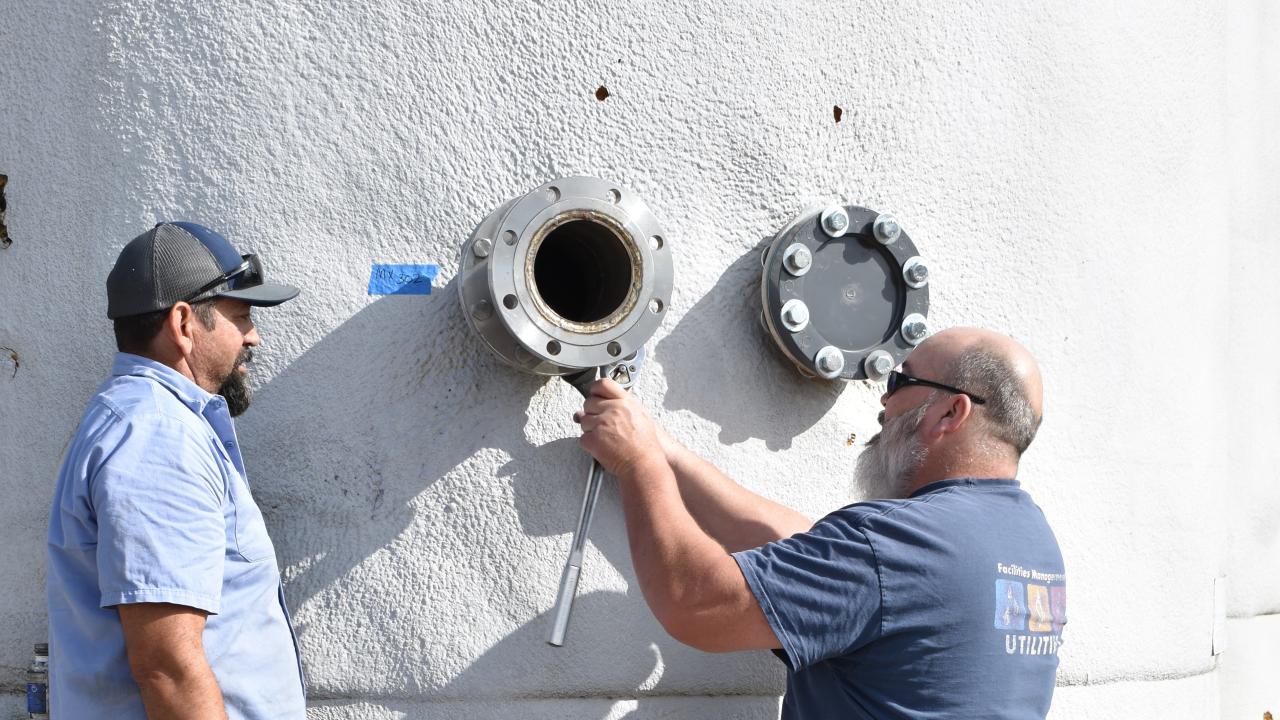Ammonia and Digestate, making the Bio-Digester work for UC Davis

A project designed to remove ammonia from the digestate (the material remaining after the anaerobic digestion of a biodegradable) and then used to make beneficial fertilizer products is coming to life at the Renewal Energy Anaerobic Digester (READ) facility!
Facilities Management (FM) Utilities staff, researchers in the Civil and Environmental Engineering department, and a third-party company, Advanced Environmental Methods (AEM), coordinated a final design. The pilot testing began in 2017, followed by a study phase and an economic analysis. Read more about that process here.
The initial design for the tanks and the internal moving pieces has been proving flawless as they construct the equipment. The team, however, had a slight snag in the location of the tanks. After moving two 10,000-gallon tanks from the Wastewater Treatment Plant to the READ facility and installing them a concrete pad, the structural analysis showed that the tank support system at the READ facility was inadequate. FM Building Maintenance Services staff poured a new slab and modified the tank stands, resulting in a long-term and secure location for the tanks.
Joe Yonkoski, Bio-digester Engineer Supervisor, gave staff a tour of the installation site during construction and connection of the equipment. The distillation column, fabricated in India, is a massive piece of equipment invaluable to the operation; working with another country during a pandemic added to the project's complexity. The size and weight of the equipment and the design required the installation of the distillation column first so that the smaller pieces of equipment were not in the way. The project was delayed six months due to waiting for the column before starting this part of the project.
FM aims to start making organic fertilizer by the end of August. Utilities secured an agreement with the California Safe Soils in Sacramento to be the sole purchaser of the product.
The organic fertilizer sales will return the investment on this equipment in 3-5 years. Although there have been some challenges, having this facility pay for itself will improve the financial sustainability of the READ facility, and UC Davis will be on the leading edge of organic waste disposal technology.
Soon, UC Davis will own one-of-a-kind machinery producing organic fertilizer. Look for more information on this project as we watch this take off —great job to everyone involved.